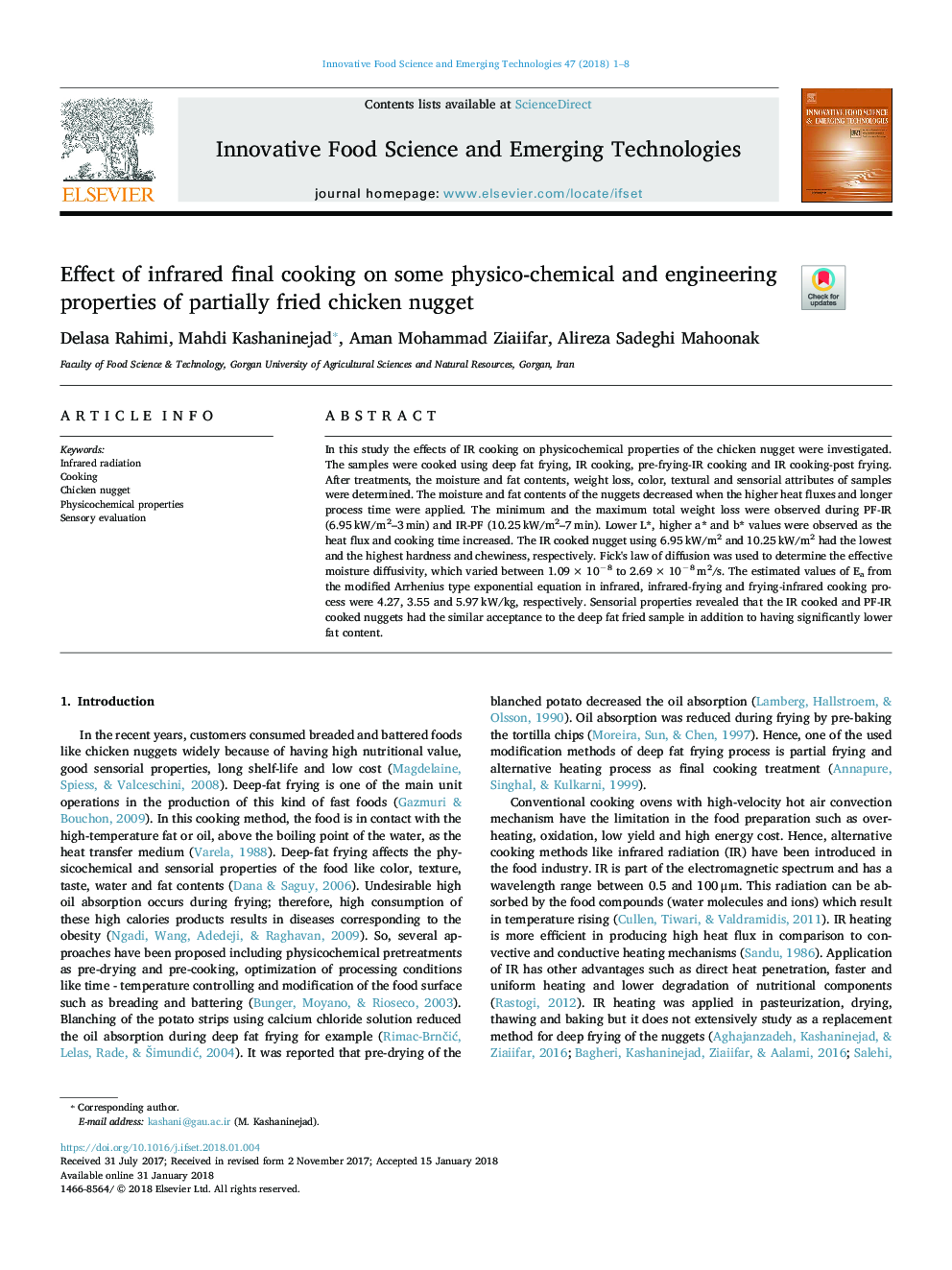| Article ID | Journal | Published Year | Pages | File Type |
|---|---|---|---|---|
| 8415357 | Innovative Food Science & Emerging Technologies | 2018 | 8 Pages |
Abstract
In this study the effects of IR cooking on physicochemical properties of the chicken nugget were investigated. The samples were cooked using deep fat frying, IR cooking, pre-frying-IR cooking and IR cooking-post frying. After treatments, the moisture and fat contents, weight loss, color, textural and sensorial attributes of samples were determined. The moisture and fat contents of the nuggets decreased when the higher heat fluxes and longer process time were applied. The minimum and the maximum total weight loss were observed during PF-IR (6.95â¯kW/m2-3â¯min) and IR-PF (10.25â¯kW/m2-7â¯min). Lower L*, higher a* and b* values were observed as the heat flux and cooking time increased. The IR cooked nugget using 6.95â¯kW/m2 and 10.25â¯kW/m2 had the lowest and the highest hardness and chewiness, respectively. Fick's law of diffusion was used to determine the effective moisture diffusivity, which varied between 1.09â¯Ãâ¯10â8 to 2.69â¯Ãâ¯10â8â¯m2/s. The estimated values of Ea from the modified Arrhenius type exponential equation in infrared, infrared-frying and frying-infrared cooking process were 4.27, 3.55 and 5.97â¯kW/kg, respectively. Sensorial properties revealed that the IR cooked and PF-IR cooked nuggets had the similar acceptance to the deep fat fried sample in addition to having significantly lower fat content.
Related Topics
Life Sciences
Agricultural and Biological Sciences
Food Science
Authors
Delasa Rahimi, Mahdi Kashaninejad, Aman Mohammad Ziaiifar, Alireza Sadeghi Mahoonak,
